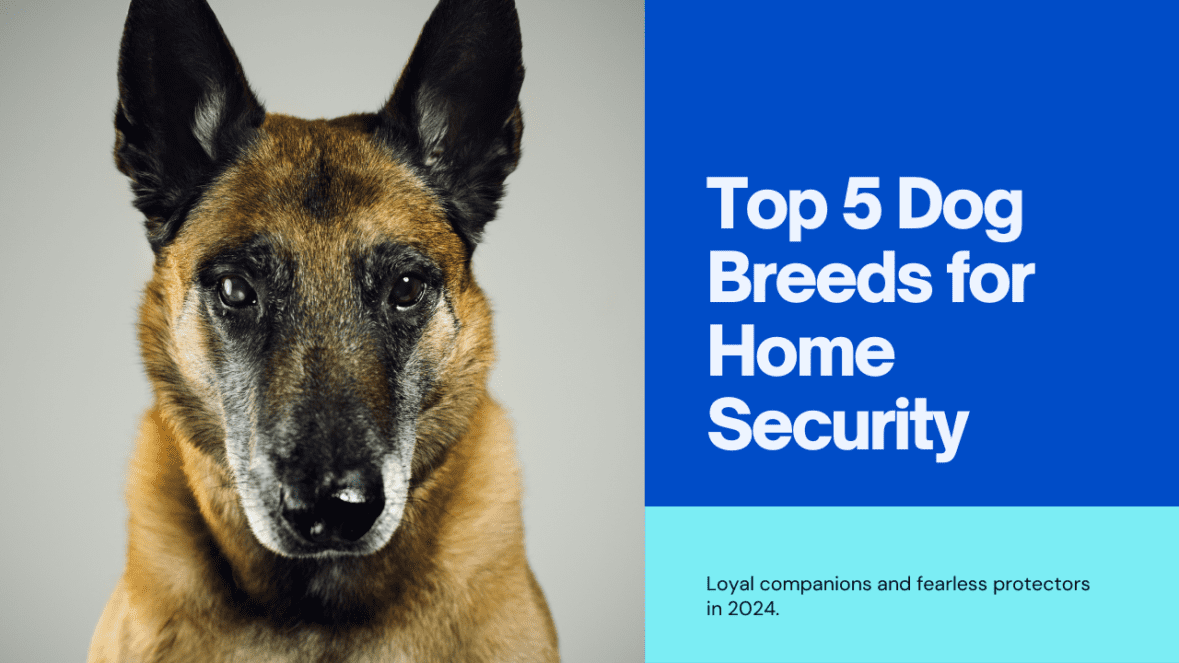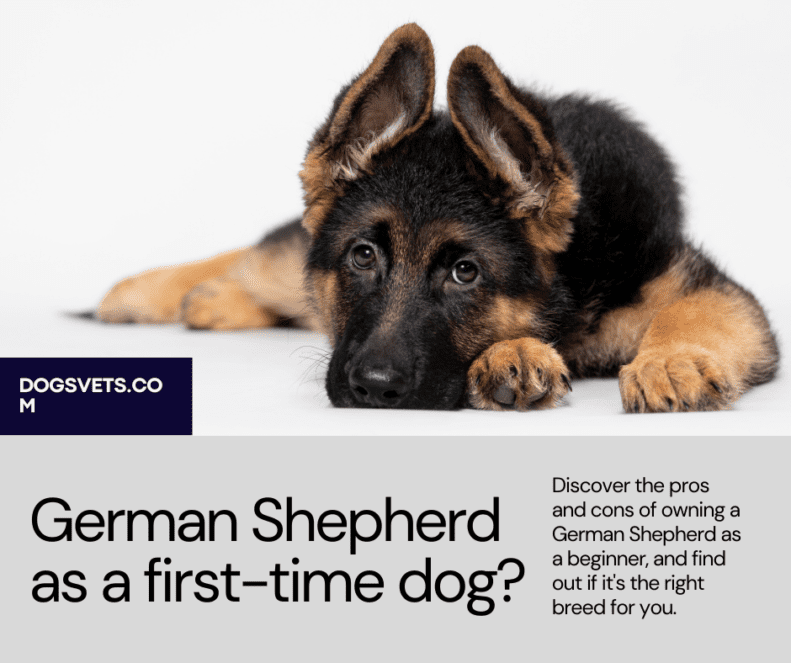Dog Grooming
Top 5 Smartest Breed of Dogs: Unleashing Your Pup’s Inner Tech Whiz

Last Updated on April 18, 2024 by Dogs Vets
Top 5 Smartest Breed of Dogs: Unleashing Your Pup’s Inner Tech Whiz
Have you ever gazed into your dog’s soulful eyes and wondered, “could they learn how to use a tablet?” Believe it or not, some dog breeds possess an exceptional capacity for learning, making them prime candidates for picking up new tricks, even those involving technology.
In today’s tech-driven world, it’s no surprise that some dog owners are curious about their furry friend’s potential for becoming a tech-savvy companion.
Imagine a dog who can navigate your smart home system, reminding you to reorder dog food or even playing their favorite tunes. While this might seem like science fiction, there are certain dog breeds that demonstrate a remarkable aptitude for learning and problem-solving, making them well-suited for tech adventures.
But first, a word of caution: While some breeds excel in the learning department, it’s important to remember that every dog is an individual. Training and patience are key to unlocking your dog’s full potential, regardless of breed.
This article is designed to be a fun and informative guide, highlighting breeds known for their intelligence and eagerness to please.
So, buckle up and get ready to explore the exciting world of tech-savvy pups!
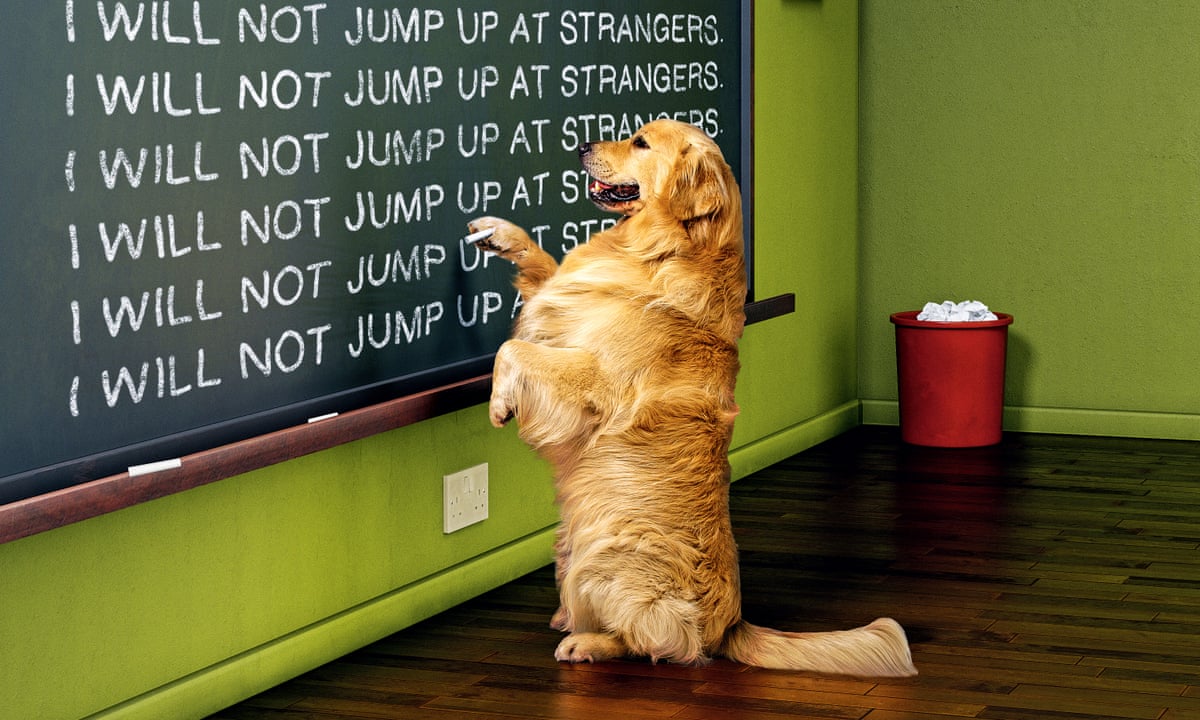
Unpacking Canine Intelligence
Before diving into specific breeds, let’s take a moment to understand what canine intelligence truly entails. Dog intelligence is multifaceted, encompassing various aspects such as:
- Trainability: How easily a dog can learn and retain commands.
- Working/Obedience: A dog’s willingness to follow instructions and complete tasks.
- Problem-solving: A dog’s ability to think independently and find solutions to challenges.
- Adaptability: How well a dog adjusts to new situations and environments.
Nature vs. Nurture: The Perfect Blend
It’s important to acknowledge that both genetics and environment play a crucial role in shaping a dog’s intelligence.
While certain breeds are predisposed to learning quickly, proper training and enrichment activities are essential for unlocking their full potential.

Ready to Unleash Your Pup’s Inner Tech Guru? Here are the Top Contenders:
Now that we’ve explored the concept of canine intelligence, let’s delve into the Top 5 Smartest Breed of Dogs that consistently rank high in the learning department.
These furry friends possess the right blend of trainability, problem-solving skills, and eagerness to please, making them prime candidates for tech adventures:
#1. Border Collie:

Often crowned the most intelligent dog breed, Border Collies are renowned for their work ethic, trainability, and eagerness to learn. Their herding instincts translate well to following commands and completing tasks.
#2. Poodle:

Don’t let their fluffy exterior fool you! Poodles are highly intelligent and athletic dogs. Their keen minds and eagerness to please make them excellent candidates for tech training.
#3. German Shepherd:
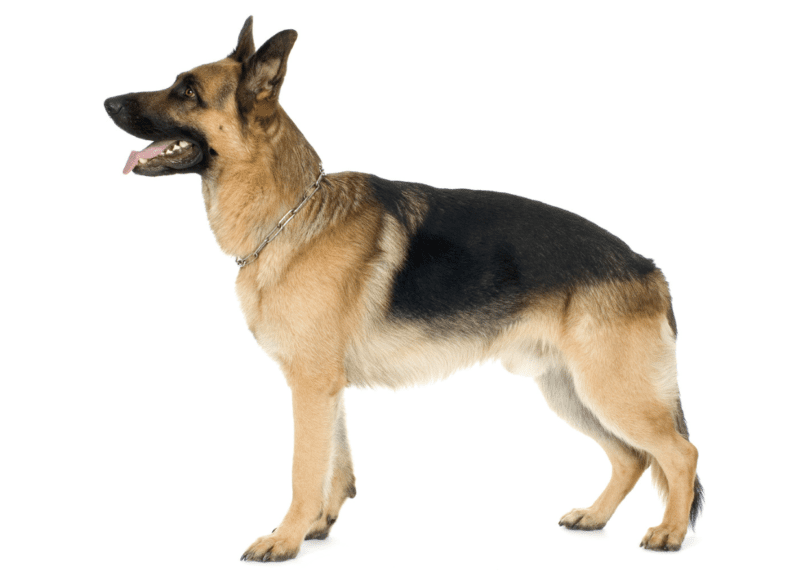
These loyal and intelligent companions excel in various tasks, from search and rescue to police work. Their problem-solving abilities and trainability make them well-suited for learning new tricks, including those involving technology.
#4. Golden Retriever:

Golden Retrievers are beloved for their friendly nature and trainability. These gentle giants possess a sharp mind and a willingness to learn, making them adaptable to various training styles.
#5. Doberman Pinscher:

Doberman Pinschers are known for their intelligence, loyalty, and athleticism. Their sharp minds and trainability make them quick learners, excelling in obedience and problem-solving tasks.
These are just a few examples, and many other breeds possess the potential to become tech-savvy companions.
With proper training and positive reinforcement, even breeds not traditionally considered “intelligent” can surprise you with their learning abilities.
Building Your Pup’s Tech Toolkit: Training Tips and Tricks
Now that you’ve identified your potential tech-savvy pup, it’s time to embark on the exciting journey of training! Here are some helpful tips to keep in mind:
- Start Early: The earlier you begin training your dog, the better. Puppies have a natural openness to learning, making them receptive to new concepts.
- Keep it Short and Sweet: Dogs have shorter attention spans than humans. Stick to short, focused training sessions to maintain your pup’s engagement.
- Positive Reinforcement is Key: Reward your dog with treats, praise, or their favorite toy for desired behaviors. Positive reinforcement builds confidence and encourages them to continue learning.
- Make it Fun! Training should be an enjoyable experience for both you and your dog. Incorporate games, puzzles, and positive interactions into your training sessions.
- Be Patient and Consistent: Learning takes time and repetition. Be patient with your dog and consistent with your training methods.

Tech Training 101: Getting Your Pup App Savvy
There are a variety of apps designed to stimulate your dog’s mind and challenge their problem-solving skills. Here’s how to introduce your pup to the wonderful world of doggy apps:
- Choose the Right App: Select an app that aligns with your dog’s age, breed, and interests. Apps can focus on food puzzles, scent work, or even basic commands.
- Start Simple: Begin with a user-friendly app that features clear visuals and easy-to-understand tasks.
- Guide Your Pup: During initial sessions, guide your dog’s paw to interact with the app elements. Gradually decrease your assistance as they become more comfortable.
- Keep it Short: Similar to general training, keep app sessions short and engaging. End on a positive note to leave your dog wanting more.

Beyond Apps: Expanding Your Pup’s Tech Horizons
While apps can be a great starting point, there are other ways to incorporate technology into your dog’s life:
- Interactive Toys: Explore tech-enabled toys that dispense treats, play sounds, or respond to your dog’s touch. These toys can keep your pup entertained and mentally stimulated.
- Smart Home Integration: Some smart home systems allow you to control features like lights or music through voice commands. With proper training, your dog could potentially learn to trigger these commands through barks or specific cues. (Always prioritize safety when involving pets and smart home features)
- Video Chatting: Video chat apps can be a lifesaver for separation anxiety-prone pups. Schedule video calls throughout the day to check in on your furry friend and offer virtual comfort.
Remember, patience and positive reinforcement are key when venturing into tech training with your dog. Keep it fun, celebrate their successes, and most importantly, enjoy the process of creating a unique bond with your tech-savvy pup!
Training Considerations: Breed Specific Nuances
Here’s a quick look at some training considerations specific to the breeds mentioned earlier:
- Border Collies: These intelligent dogs thrive on mental stimulation. Incorporate challenging puzzles and games into their tech training.
- Poodles: Poodles excel at learning tricks. Use hand signals and verbal cues to keep your training sessions engaging.
- German Shepherds: These loyal companions respond well to firm but fair training methods. Focus on clear commands and consistent rewards.
- Golden Retrievers: Golden Retrievers are eager to please. Positive reinforcement training works wonders with this breed.
- Doberman Pinschers: Doberman Pinschers are quick learners. Challenge them with a variety of tech-related tasks to keep their minds engaged.
Remember, these are just general guidelines. Every dog is an individual, and their training needs may vary. Don’t hesitate to consult with a professional dog trainer for personalized advice.
Conclusion: Unleashing Your Pup’s Potential
While some breeds naturally possess a higher capacity for learning, every dog has the potential to surprise you with their intelligence.
The key lies in creating a positive and stimulating training environment that fosters your dog’s natural curiosity and eagerness to please. With patience, dedication, and a touch of creativity, you might just discover a tech-savvy pup hidden within your furry friend.
Now, get ready to embark on a journey of exploration and discovery with your canine companion!
Imagine the possibilities: a dog who reminds you to order dog food through a smart speaker, or a pup who plays their favorite tunes with a simple nudge of their paw.
The future of tech-savvy pups is bright, and who knows, your dog might just be the next canine tech whiz!
Frequently Asked Questions (FAQs)
Is there a specific age at which I should start tech training my dog?
The earlier you begin training, the better! Puppies have a natural openness to learning and are more receptive to new concepts. However, you can start tech training dogs of any age, as long as you tailor the difficulty level to their capabilities.
What if my dog isn’t one of the breeds listed? Can they still learn tech skills?
Absolutely! While some breeds are predisposed to learning quickly, any dog with proper training and positive reinforcement can develop tech skills. Focus on finding apps and activities that cater to your dog’s individual interests and learning style.
Are there any safety concerns when using tech with my dog?
When introducing your dog to smart home features, prioritize safety first. Ensure they cannot accidentally trigger commands that could harm them or damage your home. Always supervise your dog during tech interactions, and avoid using features that rely on touchscreens, as these can be easily activated by enthusiastic paws.
What are some additional resources for training my dog?
There are numerous resources available online and in libraries that offer dog training tips and tricks. Consider consulting with a professional dog trainer for personalized guidance tailored to your dog’s specific needs and breed.
Where can I find more information about dog intelligence?
The American Kennel Club (AKC) website provides a wealth of information on various dog breeds, including their intelligence levels and trainability: https://www.akc.org/
Reference Links:
We hope this comprehensive guide has equipped you with the knowledge and tools to embark on your tech training adventure with your furry friend.
Remember, the most important ingredient is a positive and fun approach that celebrates your dog’s unique learning style. Happy training!
Dog Grooming
DIY Dog Enrichment ActivitiesUnleashing Creativity and Keeping Your Pup Happy: DIY Dog Enrichment Activities

Last Updated on April 23, 2024 by Dogs Vets
DIY Dog Enrichment Activities: Unleashing Creativity and Keeping Your Pup Happy
Are you looking for fun and engaging activities to keep your furry friend entertained?
Look no further! In this article, we will explore a variety of do-it-yourself (DIY) dog enrichment activities that will not only stimulate your pup’s mind but also bring joy and happiness to their day. From homemade treat puzzles to interactive games, we’ve got you covered!
Our canine companions bring endless joy and unconditional love into our lives. But let’s face it, even the most playful pooch can get bored.
Imagine a dog stuck at home all day, with nothing to stimulate their curious minds and boundless energy. It’s a recipe for chewed furniture, restless pacing, and maybe even some unwanted barking.
Fear not, fellow dog lovers! Here’s where DIY dog enrichment activities come to the rescue. These activities are more than just fun and games; they’re essential for your dog’s mental and emotional well-being.
Think of it as brain training for your furry friend, keeping them mentally stimulated, reducing boredom-induced mischief, and strengthening the bond between you.
In this comprehensive guide, we’ll delve into the wonderful world of DIY dog enrichment. We’ll explore a variety of activities suitable for different dog breeds, ages, and energy levels.
So, grab your pup’s favorite toy (and maybe a camera to capture their adorable antics!), and get ready to unleash their inner Einstein!

Understanding Dog Enrichment: Why is it Important?
Enrichment goes beyond simply providing your dog with toys. It’s about offering them a variety of physical and mental challenges that engage their natural instincts – sniffing, searching, problem-solving, and of course, playing!
Here’s why enrichment is crucial for your dog’s well-being:
- Combats boredom: A bored dog is a mischievous dog. Enrichment activities keep your pup mentally stimulated, reducing boredom-induced destructive behaviors like chewing and digging.
- Improves cognitive function: Just like humans, dogs need mental exercise to stay sharp. Enrichment activities help prevent cognitive decline, especially in senior dogs.
- Reduces stress and anxiety: Mental stimulation is a great stress reliever for dogs. Engaging activities can help calm anxious pups and promote relaxation.
- Strengthens the bond between you and your dog: Spending quality time together working on enrichment activities is a fantastic way to build a strong bond with your furry friend.
- Provides an outlet for natural instincts: Many enrichment activities tap into your dog’s natural instincts, like sniffing for treats or using their paws to manipulate objects. This allows them to express themselves in a healthy way.
Why Enrichment Activities Matter
Before we dive into the exciting world of DIY dog enrichment, let’s take a moment to understand why these activities are so important for our canine companions.
Dogs, like humans, have a need for mental and physical stimulation. Without proper enrichment, they can become bored, restless, and even develop behavioral issues.
By providing your dog with engaging activities, you are not only preventing boredom but also strengthening the bond between you and your furry friend. Plus, it’s a great way to tap into their natural instincts and keep them happy and healthy!
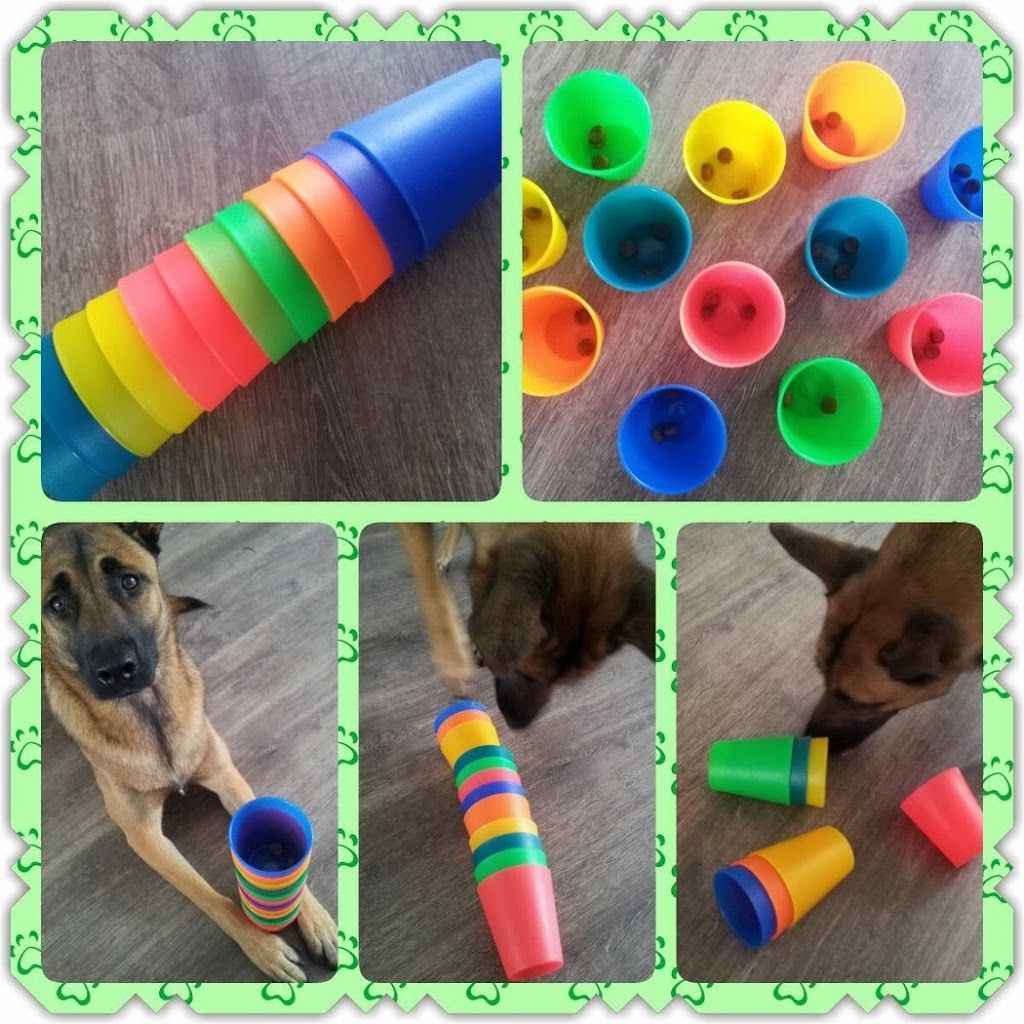
DIY Treat Puzzles
Treat puzzles are a fantastic way to challenge your dog’s problem-solving skills while rewarding them with tasty treats.
Here’s a simple DIY treat puzzle you can create at home:
- Take an empty plastic bottle and clean it thoroughly.
- Make small holes in the bottle using a sharp object, such as a knife or scissors.
- Fill the bottle with your dog’s favorite treats or kibble.
- Watch as your pup tries to figure out how to get the treats out!
Not only will this keep your dog entertained for hours, but it will also provide them with mental stimulation as they work to solve the puzzle.
Interactive Games
Another great way to keep your dog entertained is by playing interactive games. One popular game is “hide and seek.” Here’s how you can play:
- Find a few of your dog’s favorite treats or toys.
- Ask your dog to sit and stay in one room while you hide the treats or toys in another room.
- Release your dog and encourage them to find the hidden treasures.
- Celebrate together when they successfully find each item!
This game not only engages your dog’s sense of smell but also encourages them to use their problem-solving skills to locate the hidden items.

Creating an Enrichment Schedule
Now that you have a few DIY dog enrichment activities under your belt, it’s important to create a schedule to ensure your pup gets regular mental and physical stimulation.
Here’s an example of a weekly enrichment schedule:
- Monday: DIY treat puzzle
- Tuesday: Interactive game – hide and seek
- Wednesday: DIY snuffle mat
- Thursday: Training session
- Friday: Puzzle toy
- Saturday: Nature walk
- Sunday: Relaxation day
Feel free to mix and match activities based on your dog’s preferences and energy levels. The key is to provide them with a variety of mental and physical challenges throughout the week.
Conclusion
DIY dog enrichment activities are a fantastic way to keep your pup happy, engaged, and mentally stimulated. Whether it’s a homemade treat puzzle or an interactive game of hide and seek, these activities will bring joy to both you and your furry friend.
So why wait? Start unleashing your creativity today and watch as your dog’s tail wags with excitement!
Frequently Asked Questions
Can I use regular treats for DIY treat puzzles?
Absolutely! You can use your dog’s favorite treats or even their regular kibble for DIY treat puzzles.
How often should I change the DIY treat puzzles?
It’s a good idea to change the treat puzzles regularly to keep your dog engaged. Aim for once a week or whenever they seem to have mastered the puzzle.
Are there any safety precautions I should take?
Always supervise your dog during enrichment activities to ensure their safety. Remove any small or potentially hazardous parts from the puzzles or games.
Can I combine different enrichment activities in one day?
Of course! Feel free to mix and match activities based on your dog’s energy levels and preferences. The goal is to provide them with a variety of mental and physical challenges.
Are there any age restrictions for these activities?
Most DIY dog enrichment activities can be enjoyed by dogs of all ages. However, some puzzles or games may be more suitable for puppies or senior dogs. Adjust the difficulty level accordingly.
Reference Links:
-
American Society for the Prevention of Cruelty to Animals (ASPCA): https://www.aspcapro.org/topics/enrichment-behavior This ASPCA webpage offers a variety of DIY enrichment activities for dogs, including food puzzles, scent work games, and interactive toys.
-
The Association of Professional Dog Trainers (APDT): https://apdt.com/ The APDT website is a valuable resource for dog owners seeking information on training, behavior, and enrichment. While there isn’t a dedicated section on DIY activities, they offer articles on the importance of enrichment and tips for choosing appropriate activities for your dog.
-
The Kennel Club: https://www.thekennelclub.org.uk/ The Kennel Club website provides information on dog breeds, training, and healthcare. Their section on “Keeping Your Dog Mentally Stimulated” offers some basic enrichment ideas, including scent work games and interactive toys.
Animal Care
How to Socialize Your Puppy: Tips and Best Practices for a Well-Adjusted Dog

Last Updated on April 10, 2024 by Dog Lover
How to Socialize Your Puppy: Tips and Best Practices for a Well-Adjusted Dog
Congratulations on welcoming a furry friend into your life! A new puppy brings endless cuddles, playful moments, and unconditional love.
But before your pup becomes a confident and well-adjusted canine companion, there’s an important step you can’t skip: socialization.
Think of socialization as your puppy’s passport to a world full of exciting experiences. It’s about introducing them to different sights, sounds, smells, people, and other animals in a positive and controlled way.
This crucial period in their development helps shape their personality and prevents them from becoming fearful or anxious later in life.
So, how do you navigate this socialization journey with your adorable (and possibly mischievous) pup?
Buckle up, pawrents, because we’re diving deep into everything you need to know!
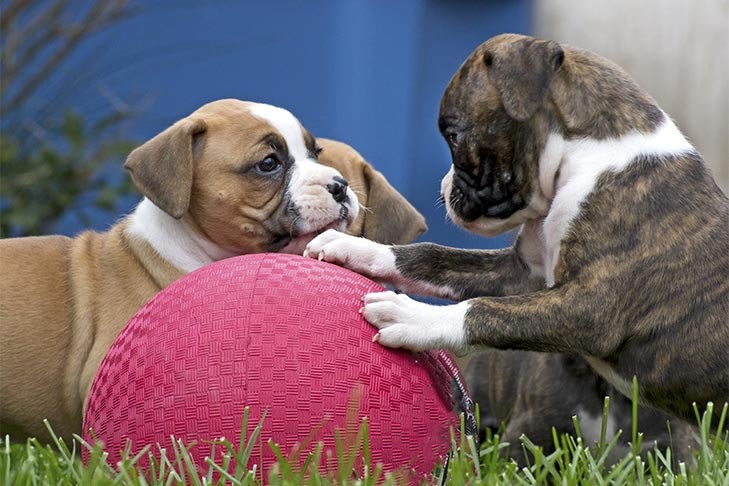
The Golden Window of Opportunity: Why Puppy Socialization Matters
The most critical time for socialization is between 3 and 12 weeks of age. This period is often referred to as the “socialization window”.
During this time, puppies are naturally more accepting of new experiences and less likely to develop fear-based behaviors. Consider it their prime time for learning about the world around them.
Here’s why socialization is so important:
- Builds Confidence: Positive interactions with different people and animals help your puppy feel secure and comfortable in various situations.
- Prevents Fear and Anxiety: Unsocialized puppies can become fearful of things they haven’t encountered before, leading to barking, lunging, or hiding.
- Enhances Trainability: A well-socialized puppy is more receptive to learning cues and commands, making training a breeze.
- Creates a Well-Adjusted Dog: Ultimately, socialization helps your furry friend become a happy, outgoing canine citizen who thrives in various social settings.

Let’s Get Social: Practical Tips for Socializing Your Puppy
Now that we understand the importance of socialization, let’s get down to the fun part – creating positive experiences for your pup!
Here are some practical tips to guide you:
1. Start Early and Keep it Positive
Remember the golden window? Don’t waste a single precious week! Begin socialization as soon as you bring your puppy home, even before they’re fully vaccinated.
Focus on creating positive associations with everything new they encounter.
2. Embrace the Power of Playdates
Playdates aren’t just for human kids! Scheduled puppy playdates are a fantastic way to introduce your pup to other dogs in a safe and controlled environment.
Look for well-socialized dogs of similar size and temperament for these initial interactions. A puppy park can also be a good option, but keep an eye on your pup and ensure they’re comfortable before letting them loose.
3. Make Friends with Strangers (Well, Kind Strangers)
Don’t be shy about introducing your puppy to new people of all ages and appearances. Encourage gentle petting and positive interactions.
This could involve asking friends and family to visit, or simply stopping strangers (who look approachable!) on your daily walks.
4. Hit the Town (or Park)!
Expose your puppy to the sights and sounds of the real world. Take them on car rides, visit pet-friendly stores, or stroll through a park (avoiding areas with high dog traffic until they’re fully vaccinated).
These everyday experiences can help them become desensitized to common noises and activities.
5. Don’t Forget the Non-Canine Crew
While canine companions are important, introducing your puppy to other friendly animals can also be beneficial.
This could involve supervised interactions with cats, hamsters, or even well-socialized farm animals (with their owner’s permission, of course!).
Remember: Always supervise your puppy during interactions with other animals and ensure both parties are comfortable.
6. Desensitization is Key
Some everyday occurrences can be scary for puppies – loud noises, vacuum cleaners, or even the mailman!
Gradually introduce these stimuli in a controlled way, pairing them with positive reinforcement like treats or praise.
7. Respect Your Puppy’s Limits
Don’t overwhelm your pup! Pay attention to their body language. Signs of stress or fear can include flattened ears, tucked tails, or whining.
If your puppy seems uncomfortable, take a break or change the environment.
8. Socialization is an Ongoing Process
While the critical window closes around 12 weeks, socialization doesn’t stop there.
Continue to expose your dog to new experiences throughout their life to maintain their confidence and well-adjusted personality.
9. Seek Help if Needed
If you’re facing challenges socializing your puppy, don’t hesitate to seek professional help.
A certified animal behaviorist or experienced dog trainer can provide valuable guidance and personalized strategies to address any specific concerns you might have.
Remember: Socialization is an investment in your furry friend’s future happiness and well-being.
By putting in the time and effort during this crucial period, you’re setting your pup up for a lifetime of positive social interactions and a fulfilling relationship with you.
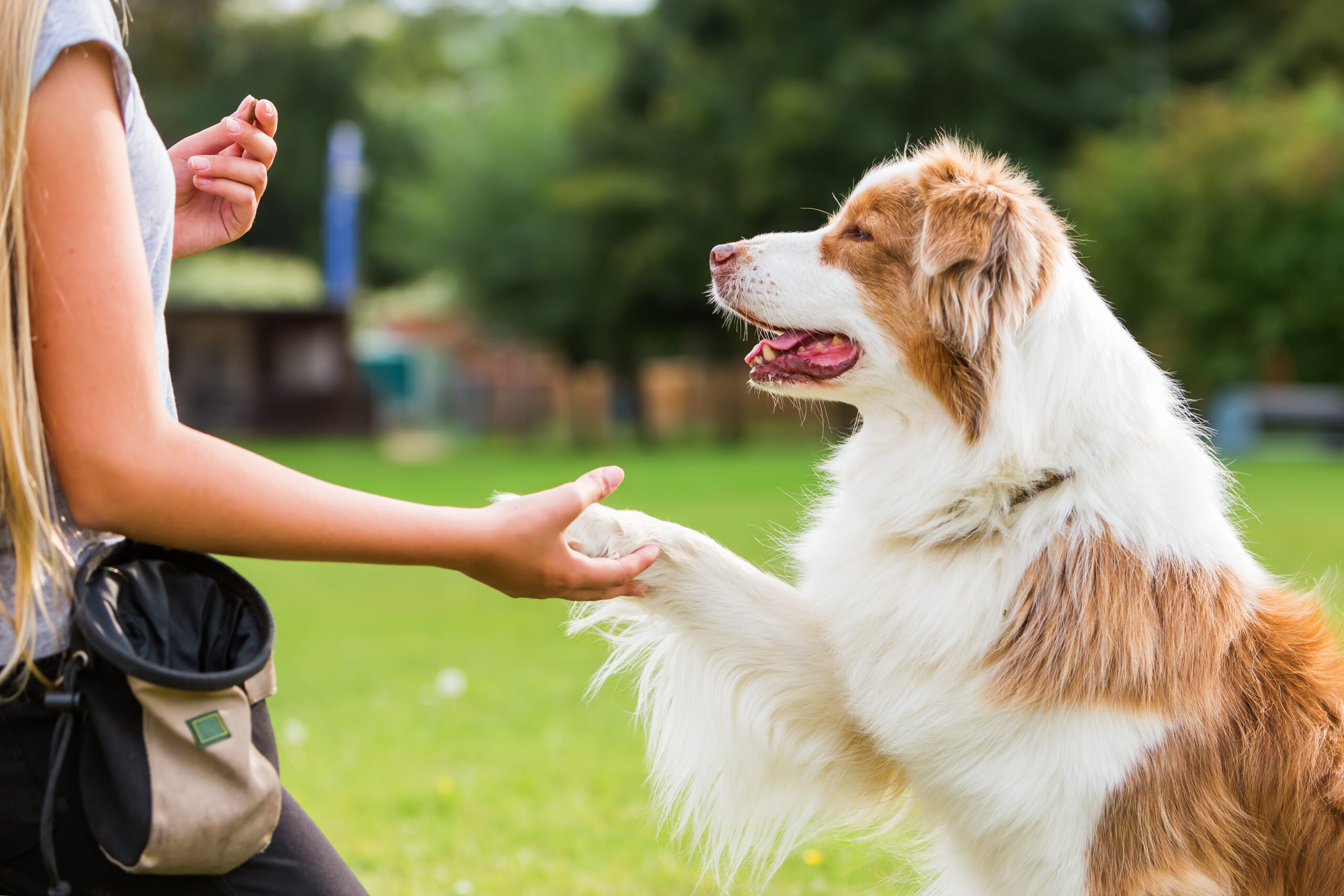
Beyond the Basics: Advanced Socialization Techniques
Now that you’ve mastered the essential socialization techniques, let’s explore some additional strategies to further enrich your puppy’s experiences:
10. Puppy Kindergarten
Enrolling your pup in a puppy kindergarten class is a fantastic way to jumpstart their socialization journey.
These classes provide a safe and controlled environment for puppies to interact with each other, learn basic commands, and get used to different people and situations.
Bonus Tip: Look for puppy kindergarten classes that utilize positive reinforcement training methods.
11. Novelty Walks
Instead of sticking to the same walking route every day, take your puppy on “novelty walks” to explore new neighborhoods, parks, or trails. This helps them become accustomed to different environments and stimuli.
12. The Power of Positive Reinforcement
Throughout the socialization process, make sure to reward your puppy for positive and calm behavior.
This could involve treats, praise, or their favorite toy. By associating new experiences with positive reinforcement, you encourage your pup to approach them with confidence.

Conclusion: Building a Well-Socialized Pup
Socialization is a crucial step in raising a happy, confident, and well-adjusted canine companion.
By following these tips and creating positive experiences for your puppy, you’re laying the foundation for a lifetime of joyful adventures together.
Remember, a well-socialized dog is a joy to have around, enriching not just their life but yours as well.
Ready to embark on this exciting socialization journey with your furry friend? Grab your treats, leash, and adventurous spirit – it’s time to show your pup the world!
FAQs
What if my puppy isn’t fully vaccinated yet? Can they still be socialized?
Yes! While socialization is certainly easier once your puppy has received their full set of vaccinations, there are still ways to introduce them to new experiences safely. You can invite friends and family over for supervised playdates, carry your puppy in a stroller through busy areas, or practice desensitization techniques within your home environment.
My puppy seems scared of other dogs. What should I do?
Don’t force interactions! Focus on creating positive associations with other canines. Start by observing friendly dogs from a distance and rewarding your puppy for calm behavior. Gradually decrease the distance and introduce playdates with well-socialized dogs of similar size and temperament.
What if my puppy growls or barks at new people?
This could be a sign of fear or anxiety. Avoid punishing your pup, as this will only exacerbate the problem. Instead, consult a certified animal behaviorist or experienced dog trainer for guidance on desensitization techniques and positive reinforcement strategies to address their fear.
Is socialization important for all dog breeds?
Absolutely! While some breeds might be naturally more social than others, socialization is crucial for all dogs. It helps them become well-adjusted canine citizens who can navigate various social situations confidently.
How long should I continue socializing my dog?
Socialization is an ongoing process. While the critical window closes around 12 weeks, continue to expose your dog to new experiences throughout their life to maintain their confidence and well-adjusted personality. This could involve attending dog park meetups, trying new activities like agility training, or simply incorporating friendly greetings with people and dogs during your daily walks.
By following these tips and addressing any FAQs you might have, you’re well on your way to raising a happy, confident, and well-socialized dog!
Reference Links:
- The American Kennel Club (AKC) on Puppy Socialization: https://www.akc.org/expert-advice/training/puppy-socialization/
- The Society for Promoting Animal Welfare (SPAW) on Socialization: https://www.avma.org/resources-tools/animal-health-and-welfare/socialization-dogs-and-cats
- The American Veterinary Medical Association (AVMA) on Puppy Development: https://www.akc.org/expert-advice/training/puppy-growth-timeline-transitions-puppyhood/
- The Association of Professional Dog Trainers (APDT) on Positive Reinforcement Training: https://apdt.com/
- The American College of Veterinary Behaviorists (ACVB) on Finding a Certified Animal Behaviorist: https://www.dacvb.org/
Dog Grooming
How to Safely Trim a Dog’s Nails? The Complete Guide to 2024

Last Updated on April 4, 2024 by Dogs Vets
Trimming a dog’s nails safely involves using proper tools, avoiding the quick, and staying calm. Start by desensitizing your dog to nail trimming, then use a sharp clipper to cut the nail at a slight angle.
Check for the quick before you begin, and make slow, steady cuts to avoid accidents. Reward your dog for good behavior and stop if they become anxious. Regular nail trims are important for your dog’s health and comfort, so take the time to do it properly to avoid any issues.
By following these steps and practicing patience, you can safely trim your dog’s nails at home.
Preparing Your Dog
Dogs can be sensitive when it comes to having their nails trimmed. To ensure a successful and stress-free grooming session, it’s important to prepare your dog both mentally and physically.
Taking the time to familiarize your furry friend with the nail trimming process and creating a calm environment can make all the difference. Below, we’ll explore how to recognize signs of stress and introduce your dog to nail trimming, setting them up for a positive experience.
Recognizing Signs Of Stress
Knowing how to recognize signs of stress in your dog is crucial before starting the nail trimming process. By understanding their body language, you can gauge if they are comfortable or anxious. Some common signs of stress in dogs include:
- Panting excessively
- Whining or growling
- Pulling away or hiding
- Showing signs of aggression
- Trembling or shaking
- Dilated pupils or wide-eyed expression
Should you notice any of these signs, it’s important to take a step back and give your dog some time to calm down before attempting to trim their nails. Patience and understanding are key.
Introducing Your Dog To Nail Trimming
Introducing your dog to nail trimming gradually can help alleviate their fear and make the process smoother. Below are some steps to follow:
- Start by getting your dog used to having their paws touched gently. Reward them with praise and treats to create a positive association.
- Once your dog is comfortable with paw handling, introduce the sound of the nail trimmer or grinder. Let them sniff it and associate it with positive experiences.
- Next, practice the motion of trimming without actually cutting the nails. This will allow your dog to get accustomed to the sensation.
- Gradually introduce the nail trimmer or grinder and make small, gradual cuts. Reward your dog with treats and praise each time to reinforce positive behavior.
Remember, consistency is key. By following these steps and ensuring your dog feels comfortable and safe throughout the process, you are setting them up for successful nail trimming sessions in the future.
Choosing The Right Tools
When it comes to trimming your dog’s nails, choosing the right tools is essential to ensure a safe and comfortable experience for both you and your furry friend.
With the proper tools, you can effectively trim your dog’s nails without causing any discomfort or injury. Let’s explore the types of nail clippers and other tools you can use for nail trimming.
Types Of Nail Clippers
There are several types of nail clippers available for trimming a dog’s nails. The most common options include:
- Guillotine Clippers: These clippers feature a hole where the dog’s nail is inserted, and a blade slices through the nail when the handles are squeezed.
- Scissor Clippers: These clippers resemble scissors and are suitable for dogs with thicker nails.
- Grinder Tools: Electric or battery-operated grinders can be used to file down the nails to the desired length. They are particularly useful for dogs with dark nails where it’s challenging to see the quick.
Other Tools For Nail Trimming
In addition to nail clippers, there are other tools that can aid in the nail trimming process:
- Nail File: A nail file can be used to smooth any rough edges after trimming the nails or to gradually shorten the nails for dogs who are sensitive to clippers.
- Styptic Powder: In case of accidental bleeding, styptic powder can help stop the bleeding quickly.
- Scratch Pad: Placing a scratch pad near your dog’s favorite resting spot can help naturally wear down the nails.
Trimming Techniques
Trimming Techniques:
Proper nail length and addressing bent dog nails are crucial aspects of safely trimming your furry friend’s nails.
Proper Nail Length
Trimming dog nails to the correct length is essential to maintain their overall paw health.
- Regularly check the nails for overgrowth.
- Clip the white portion of the nail, avoiding the quick.
- Use a sharp nail trimmer for a clean cut.
What To Do If Dog Nail Bent 90 Degrees?
If your dog nail bent 90 degrees, causing discomfort, it’s important to address it promptly:
- Do not attempt to bend the nail back.
- Consult a veterinarian for appropriate treatment.
- Prevent further damage by keeping the nail clean.
Handling Challenges
Discover the safest way to trim your dog’s nails with this complete guide. Learn invaluable tips and techniques to handle this challenge effortlessly in 2024.
Dealing With Fear Or Anxiety
Begin by creating a calming environment for your dog, using gentle tones and soothing movements to help alleviate anxiety.
What To Do If You Accidentally Cut The Quick
Apply styptic powder to stop bleeding, and reassure your dog with comforting gestures to reduce stress.
Aftercare
Learn how to safely trim your dog’s nails with our comprehensive guide for 2024. Discover step-by-step instructions to ensure your furry friend’s comfort and safety during the process. Plus, find valuable tips and aftercare techniques to keep your dog happy and healthy after a successful nail trim.
After completing the nail clipping process, it’s essential to consider effective aftercare for your dog to ensure they stay comfortable and calm.
Rewarding Your Dog
After the nail trimming session, make sure to reward your dog with treats, cuddles, and praise. This positive reinforcement will help them associate the experience with positivity and reduce their anxiety in the future.
Monitoring for Any Discomfort
Keep an eye on your dog’s behavior after the nail trim. Look for signs of discomfort such as limping, licking their paws excessively, and reluctance to walk. If you notice any of these behaviors, consult your veterinarian immediately.
Ensuring your dog is comfortable and calm following a nail trimming session is crucial for their well-being. By incorporating these aftercare practices, you can ensure that your furry friend remains content and relaxed after their nail trimming experience.
Professional Help
While trimming your dog’s nails at home can be a convenient option, it’s important to know when to seek professional help. There may be instances where you need the expertise of a veterinarian or groomer to ensure a safe and stress-free nail trimming experience for your furry friend.
When To Seek A Vet Or Groomer
There are certain situations where it is highly recommended to reach out to a vet or groomer for assistance with your dog’s nail trimming:
- If your dog has black nails and you are unsure about the quick, the sensitive area inside the nail containing blood vessels and nerves. A professional can accurately determine the right length to avoid causing pain or injury.
- If your dog becomes extremely anxious or aggressive during the nail trimming process, it could be challenging to safely trim their nails at home. A professional can use their experience and calming techniques to ensure a stress-free and successful nail trim.
- If you have tried trimming your dog’s nails but are unable to achieve the desired results. Some dogs have thick or overgrown nails that may require specialized tools or techniques that professionals have access to.
- If you notice any abnormalities or issues with your dog’s nails, such as excessive bleeding, swelling, or signs of infection. Seeking professional help in such cases can prevent further complications and ensure proper treatment.
Benefits Of Professional Nail Trimming
Choosing professional help for your dog’s nail trimming comes with several benefits:
- Expertise and Experience: Veterinary professionals and groomers are trained to handle various breeds and temperaments, making them more knowledgeable in handling different dogs during nail trims.
- Precision: Professionals can accurately identify the appropriate length to trim your dog’s nails, minimizing the risk of causing pain or injury.
- Specialized Tools: Vets and groomers have access to specialized tools that may be necessary for dogs with difficult or overgrown nails, ensuring a smoother and safer process.
- Reduced Stress: Professionals are skilled in creating a calm and relaxed environment, alleviating your dog’s anxiety and making the entire nail trimming experience less stressful for both you and your furry companion.
- Preventative Care: Regular visits to professionals for nail trims allow them to monitor your dog’s overall nail health, prevent complications, and address any underlying issues promptly.
Seeking professional help when needed ensures that your dog’s nails are trimmed properly, keeping them healthy and reducing the risk of discomfort or injury. Remember, the well-being of your furry friend should always be a top priority!
Conclusion
As you now have a comprehensive understanding of how to safely trim your dog’s nails, you can confidently maintain their paw health. By following the guidelines and tips provided, you can ensure a stress-free experience for both you and your furry friend.
With patience and practice, you’ll become adept at this essential aspect of pet care.
Fact Check
We strive to provide the latest valuable information for pet lovers with accuracy and fairness. If you would like to add to this post or advertise with us, don’t hesitate to reach us. If you see something that doesn’t look right, contact us!
-

 Dog Care Advice3 years ago
Dog Care Advice3 years agoThe Top 9 Best Dog Collars In The Market In 2022 ( Shocking Revelation )
-

 Dog behavior3 years ago
Dog behavior3 years agoTop 25 Most Dangerous Dogs in the World with Photos
-
![Top 100 Best tough names for dogs [Male and Female]](https://dogsvets.com/wp-content/uploads/2021/02/Screen-Shot-2021-02-14-at-8.09.27-AM.png)
![Top 100 Best tough names for dogs [Male and Female]](https://dogsvets.com/wp-content/uploads/2021/02/Screen-Shot-2021-02-14-at-8.09.27-AM.png) Dog Names3 years ago
Dog Names3 years agoTop 100 Best tough names for dogs [Male and Female]
-

 Dog Names3 years ago
Dog Names3 years ago500 Top dog names female – Names that are cute as your dog
-

 Dog behavior3 years ago
Dog behavior3 years agoWhat do dogs do when they are about to die – What dogs do before death?
-

 Dog Names3 years ago
Dog Names3 years agoTop 1000 plus cute names for pets – dogs, cats, male, female and more
-
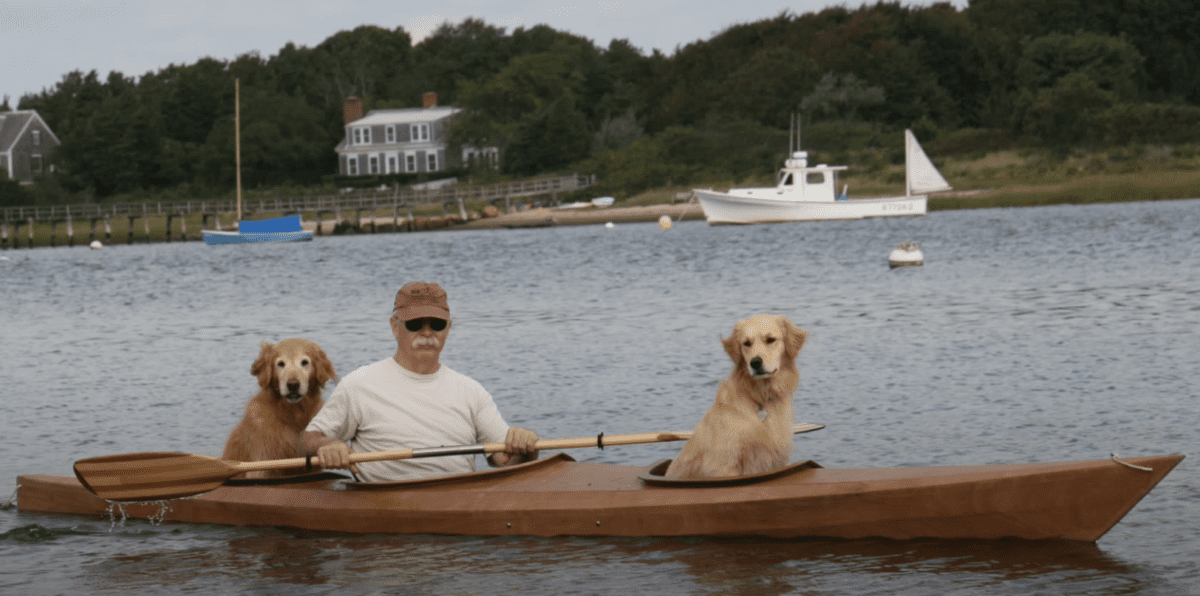
 Trending Dog Stories12 months ago
Trending Dog Stories12 months agoMan Builds a Custom Kayak to Share Aquatic Adventures with His Two Dogs”
-

 Dog Grooming3 years ago
Dog Grooming3 years agoReviews оf the Top 7 Best Dоg Wаter Fоuntаins fоr 2021 & 2022





